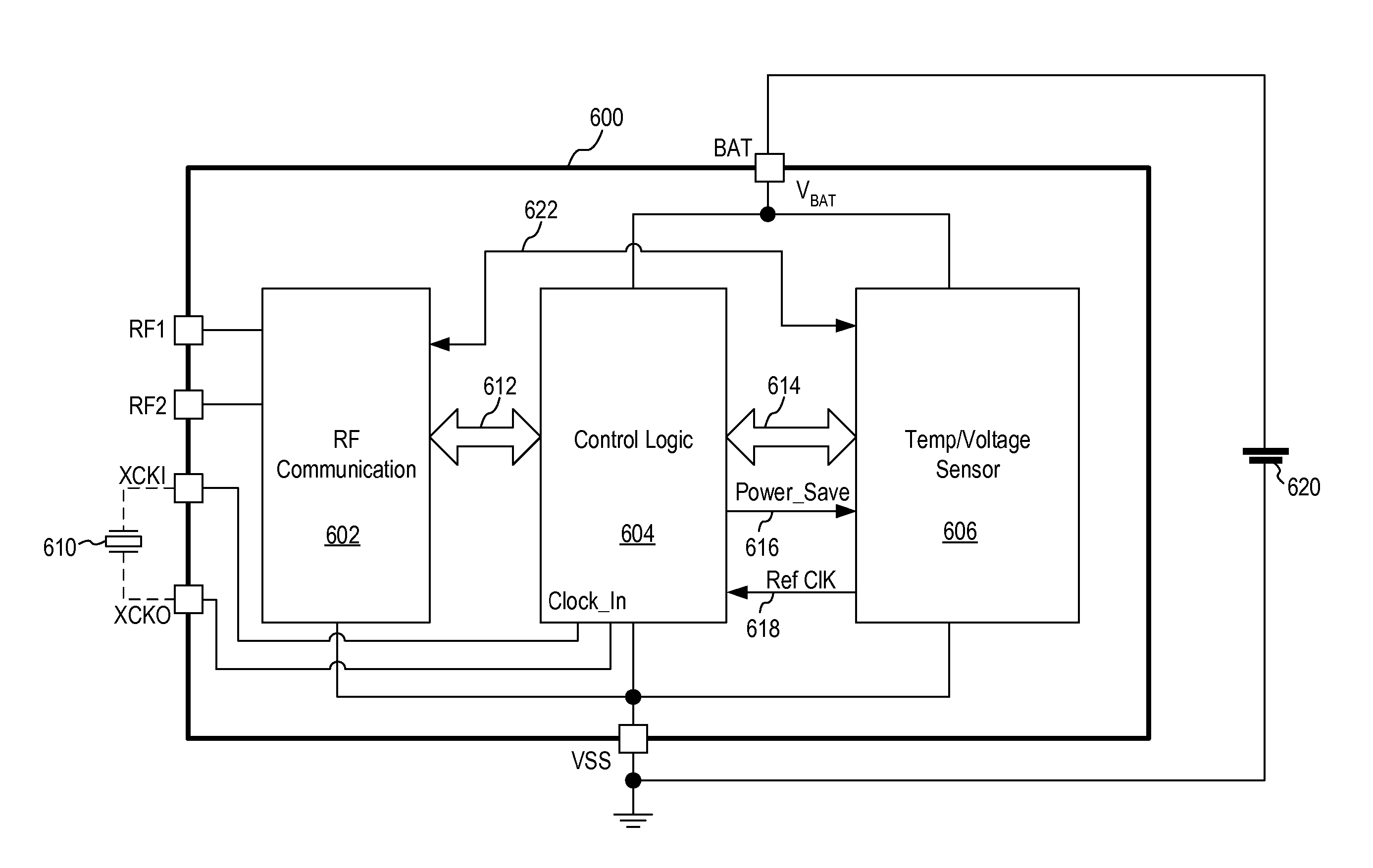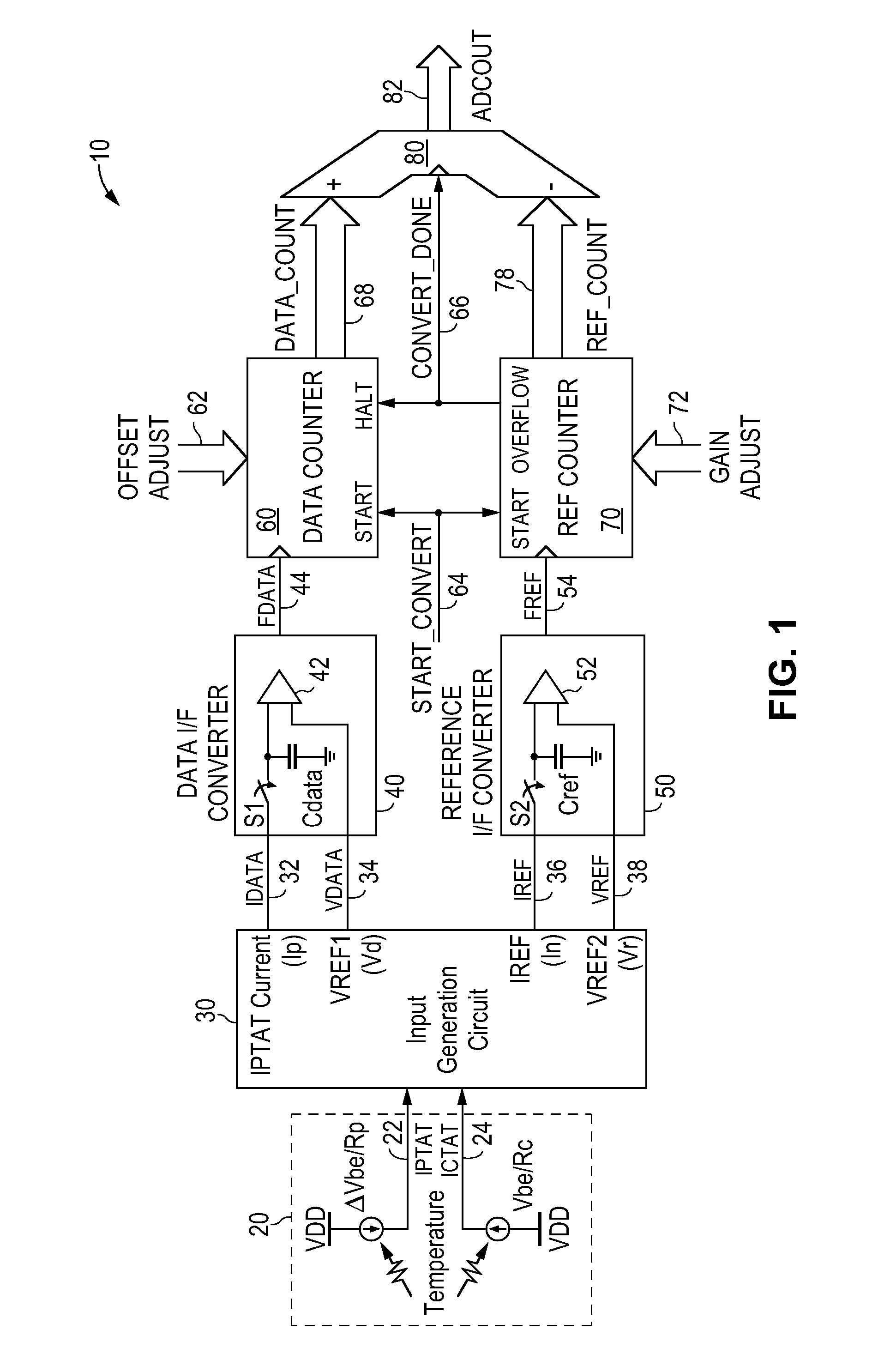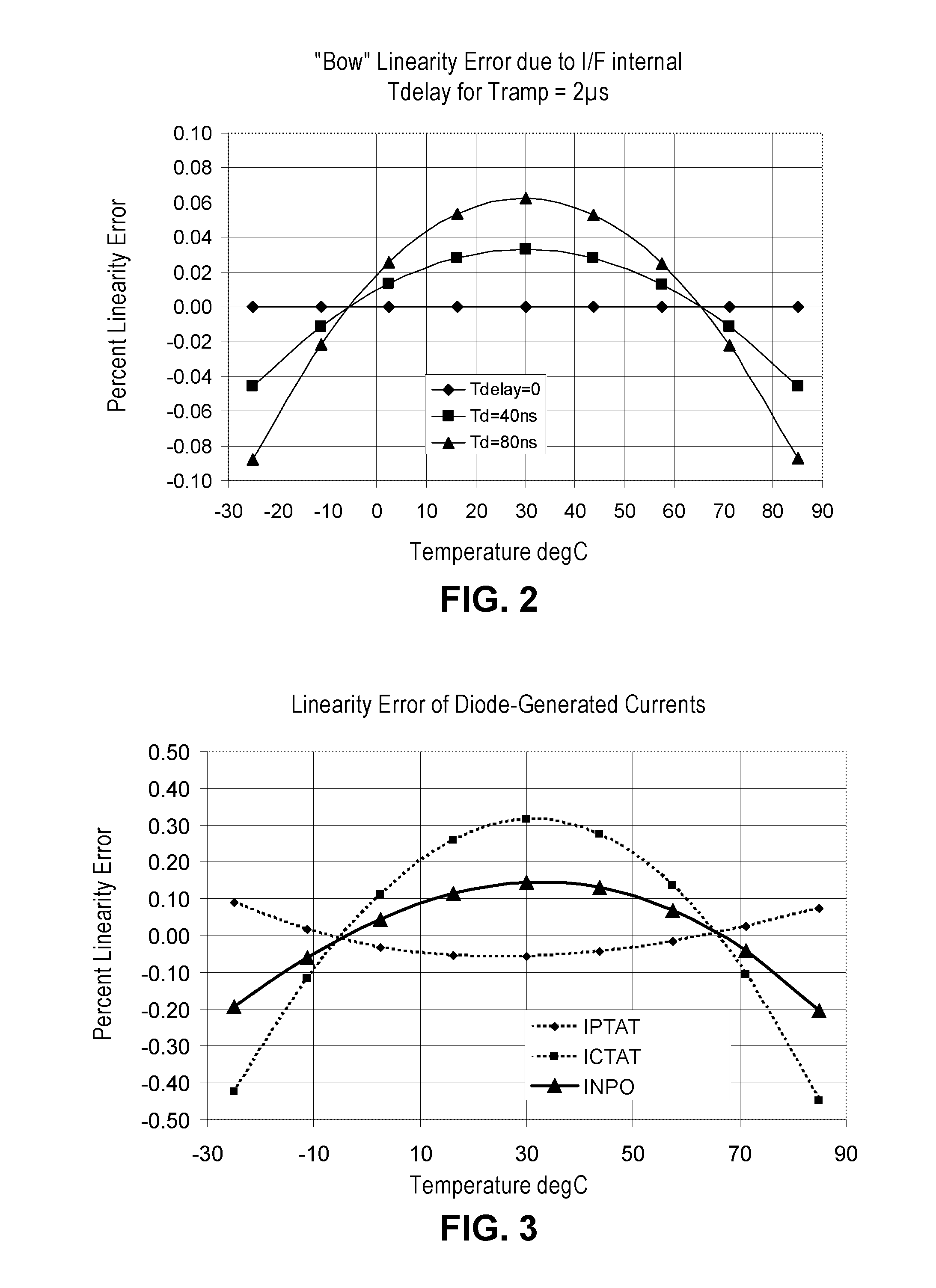RFID Temperature Logger Incorporating A Frequency Ratio Digitizing Temperature Sensor
a temperature sensor and digital output technology, applied in the field of radio frequency identification devices, can solve the problems of nonlinearity distortion of linearity of digital output signals, additional drifts and nonlinearity of oscillator frequency
- Summary
- Abstract
- Description
- Claims
- Application Information
AI Technical Summary
Benefits of technology
Problems solved by technology
Method used
Image
Examples
second embodiment
[0089] The derivation of the parameters Kp, Kv and Nc is better described by use of an input generation circuit with normalized current values. FIG. 6 is a schematic diagram of an input generation circuit for the frequency ratio digitizing temperature sensor of FIG. 1 according to the present invention. Referring to FIG. 6, input generation circuit 200 is constructed in the same manner as input generation circuit 100 of FIG. 4 except for the current multiplication factors applied in the linearity IDAC circuits. In FIG. 6, the first and second corrected currents are normalized to maintain a constant total current magnitude for each current throughout the temperature sensor. That is, in input generation circuit 100, when the fraction Kp*IPTAT current is added to the current Inpo, the resulting corrected reference current In_1 will necessarily have an increased current magnitude. The same applies to the corrected reference current Ivr. In some applications, the increased current magnit...
third embodiment
[0116]FIG. 12 is a schematic diagram of an input generation circuit implementing 2-port linearity correction for the frequency ratio digitizing temperature sensor of FIG. 1 according to the present invention. Referring to FIG. 12, input generation circuit 300 is constructed in the same manner as input generation circuit 100 of FIG. 4 except for the omission of the reference linearity IDAC. Thus, in the 2-port linearity correction method, the corrected reference current In—1 (node 318) generated by summing the current Inpo (node 308) and a Kp fraction of the PTAT current IPTAT1345 is used simultaneously to modify the reference current Iref of the reference oscillator and the reference voltage Vdata of the data oscillator. Specifically, the corrected reference current In—1 is mirrored by a buffer 319 to form current In which is used as the input reference current Iref (node 336) for the reference oscillator. The corrected reference current In_1 is applied to a resistor Rdata to genera...
PUM
 Login to View More
Login to View More Abstract
Description
Claims
Application Information
 Login to View More
Login to View More - R&D
- Intellectual Property
- Life Sciences
- Materials
- Tech Scout
- Unparalleled Data Quality
- Higher Quality Content
- 60% Fewer Hallucinations
Browse by: Latest US Patents, China's latest patents, Technical Efficacy Thesaurus, Application Domain, Technology Topic, Popular Technical Reports.
© 2025 PatSnap. All rights reserved.Legal|Privacy policy|Modern Slavery Act Transparency Statement|Sitemap|About US| Contact US: help@patsnap.com



